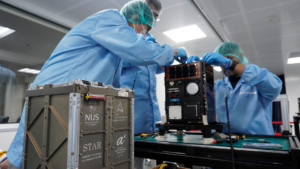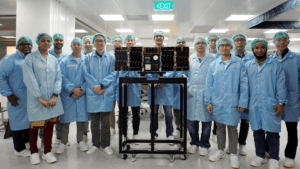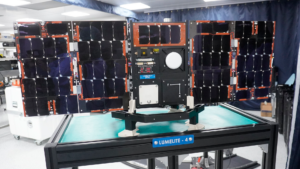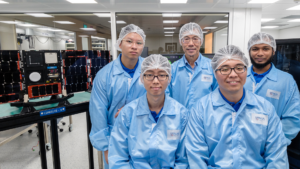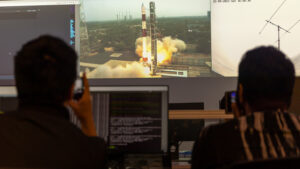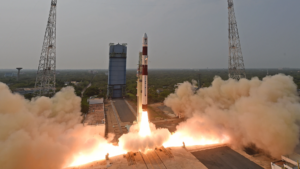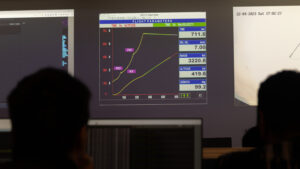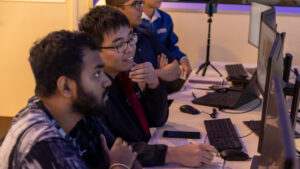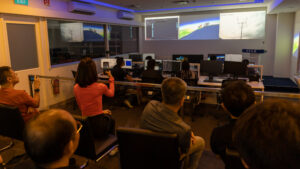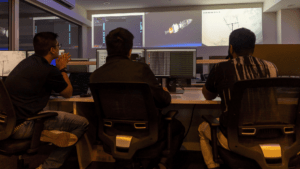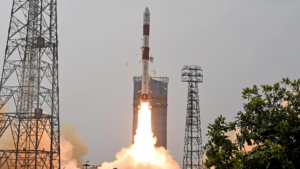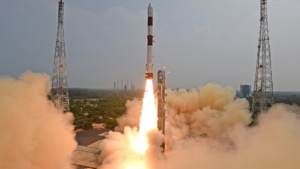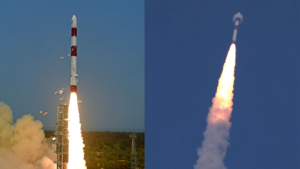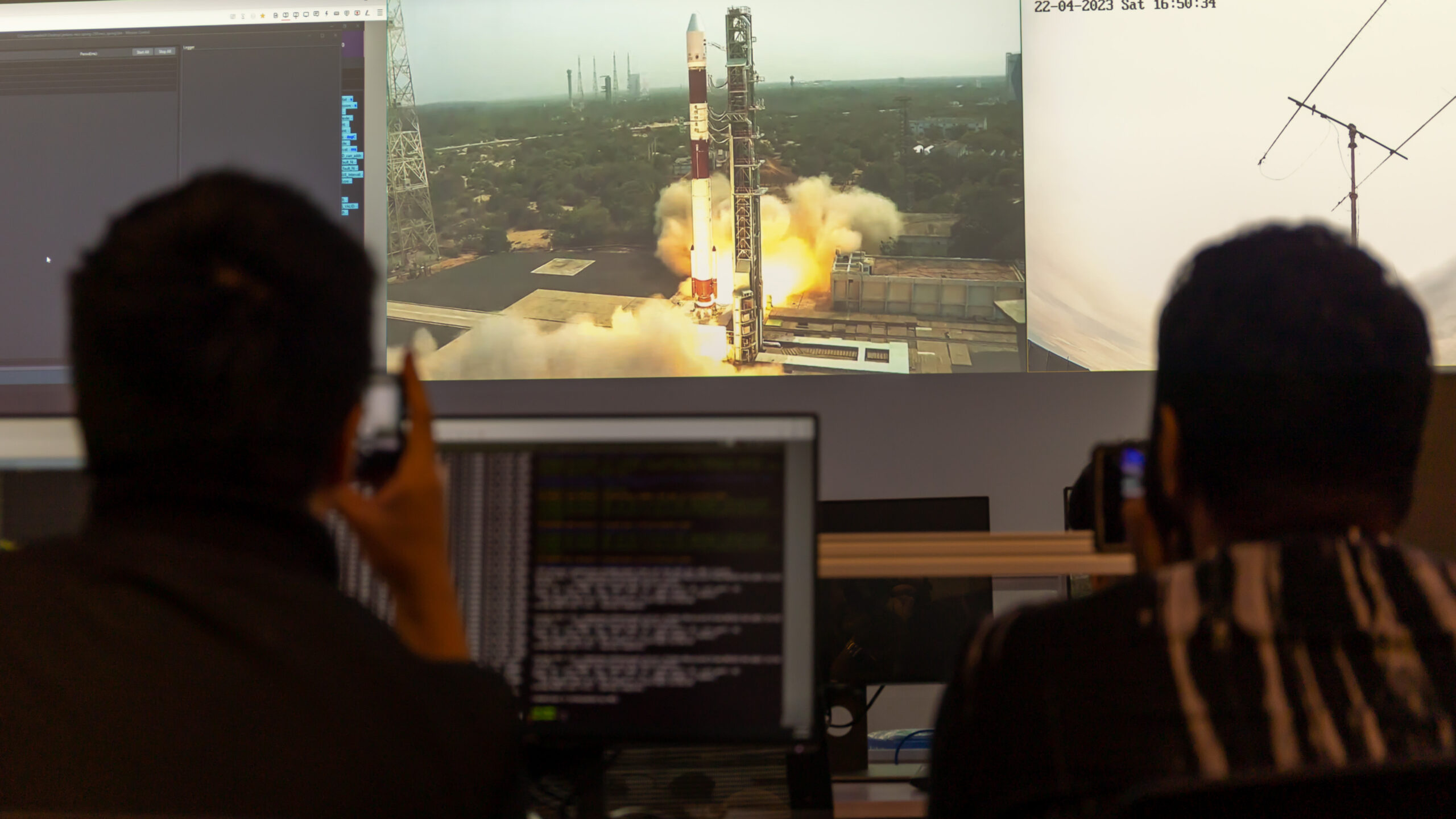
A microsatellite for maritime communications jointly developed by CDE’s Satellite Technology And Research Centre (STAR) has been successfully launched into orbit.
The satellite, Lumelite-4, blasted off from the launch site in southern India at 4:49 pm (Singapore time) on 22 April 2023, and was deployed into its planned orbit 586 kilometres above Earth.
The launch was watched from the STAR centre by a team of STAR research staff and current and former CDE students who had worked on building the satellite from its inception.
The launch crew subsequently successfully established contact with the satellite during its passes over the ground station, downloading data and reporting that all systems were operating as expected.
Lumelite-4, the third NUS satellite to be sent into space, was jointly developed by STAR in collaboration with A*STAR’s Institute for Infocomm Research (I2R).
The satellite weighs 16 kilograms and was built using NUS’s patented modular and scalable satellite bus system. It measures about 20 centimetres in length and breadth and 30 centimetres tall.
A*STAR’s I2R developed the experimental communication hardware used on the satellite.
The pioneering collaboration between NUS and A*STAR aims to test a satellite-based high-performance VHF Data Exchange System (VDES), which will significantly improve maritime communications as well as real-time traffic management and analytics for international shipping.
The project marks the first demonstration of satellite-based VDES for maritime applications in Southeast Asia.
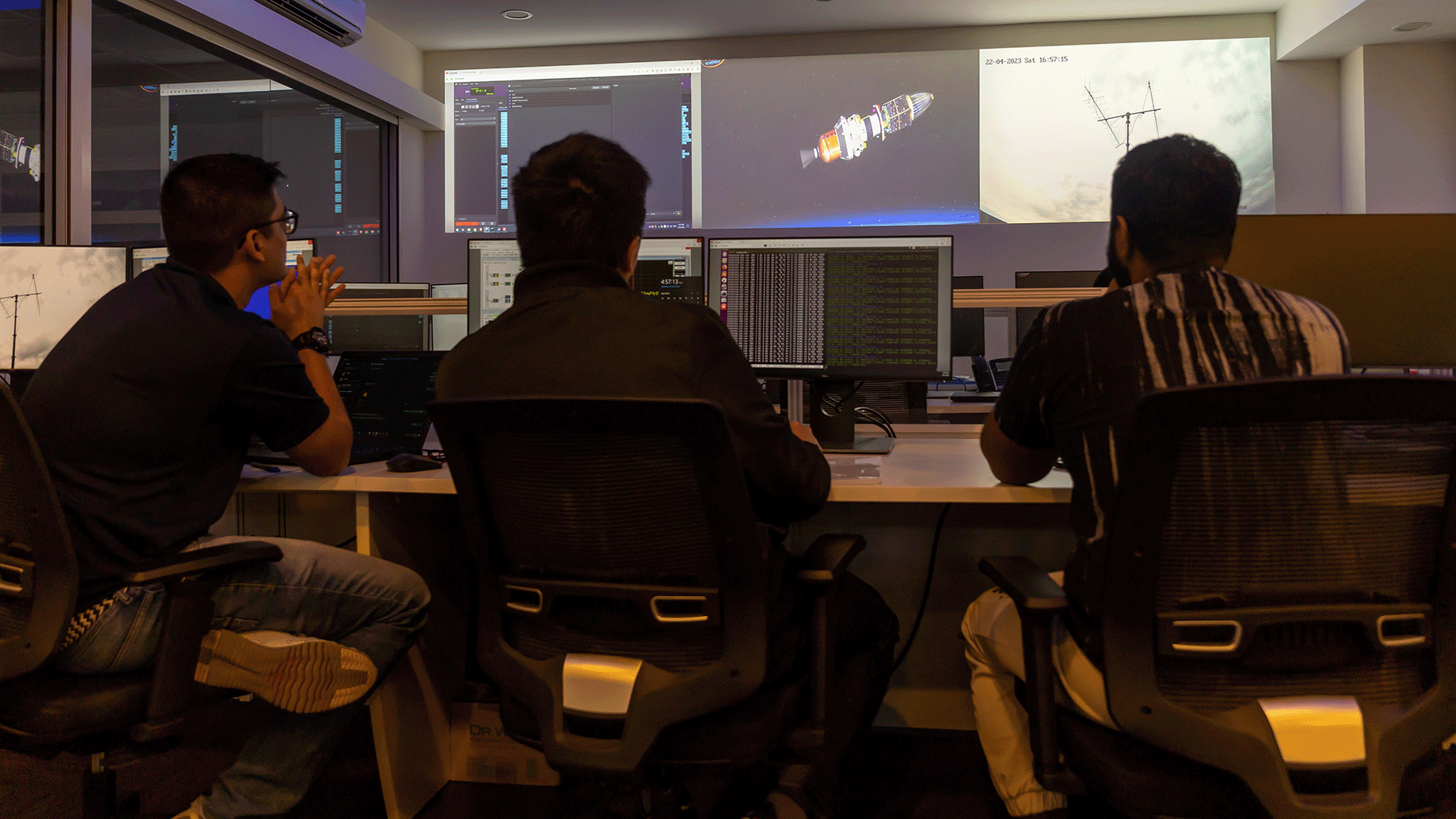
‘New chapter’
Lumelite-4 was launched aboard a Polar Satellite Launch Vehicle (PSLV) rocket from the Satish Dhawan Space Centre near Chennai in southern India. The PSLV is able to carry and deploy multiple payloads into orbit and has been used to launch various satellites into geosynchronous and geostationary orbits.
The same mission also carried a much larger 750kg Earth observation satellite, TeLEOS-2, developed by ST Engineering.
“The successful launch of Lumelite-4 marks a new chapter in NUS’ journey into space,” said Professor Low Kay Soon (Dept of Electrical and Computer Engineering), Director of the STAR Centre, after the launch.
“STAR is excited to leverage our knowledge and expertise in satellite technologies in this collaboration with A*STAR’s I2R. Over the next few months, the team aims to demonstrate the space-based implementation of high-performance VDES on a small satellite for maritime applications. The success of this mission will further strengthen Singapore’s position as an innovative space technology hub for small satellites.”
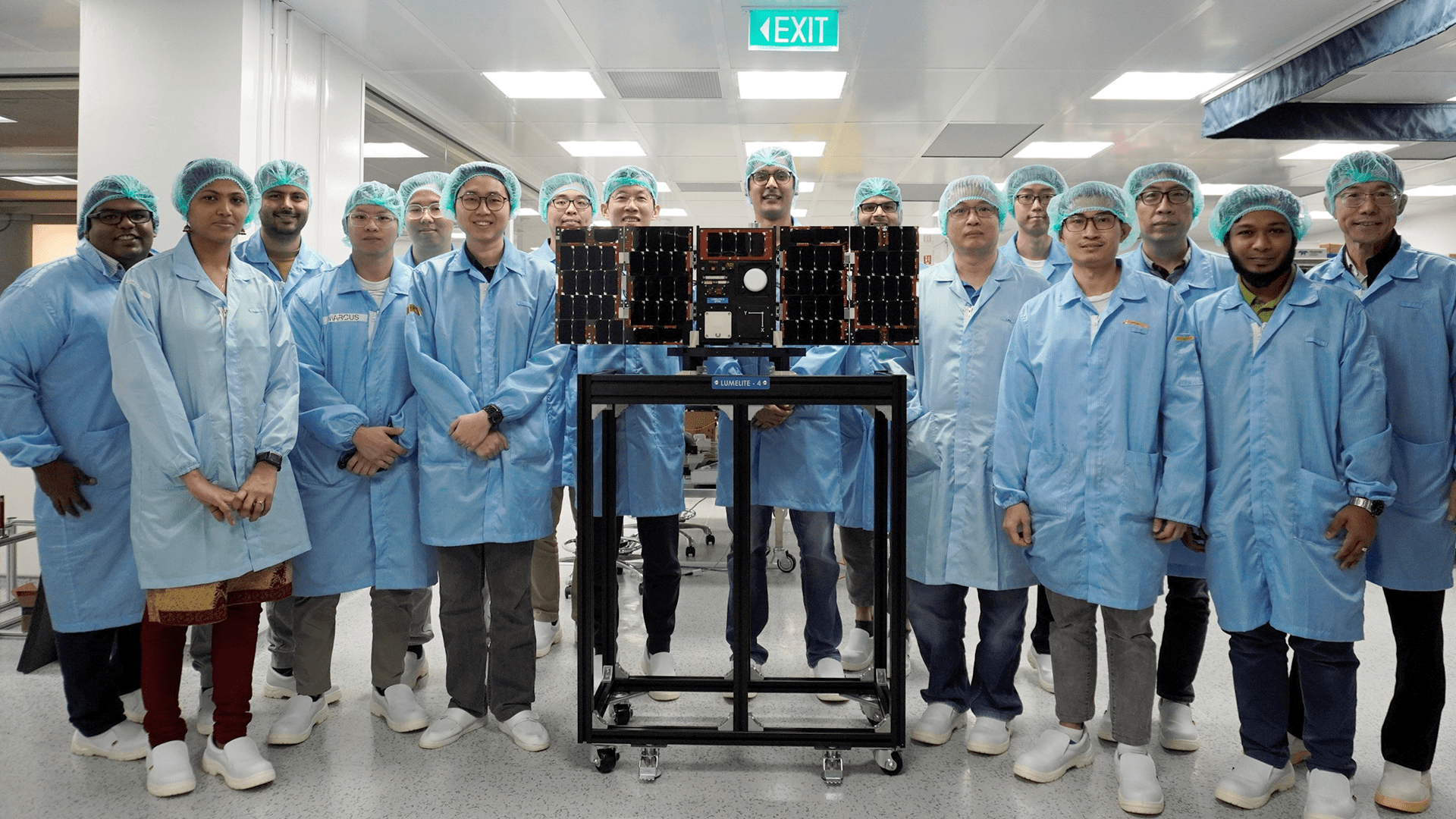
‘Every engineer’s dream come true’
The development of Lumelite-4 offered valuable learning opportunities for students to put advanced engineering concepts into practice.
Twelve students from the College of Design and Engineering, NUS worked closely with research staff at STAR between 2018 and 2022 to develop the microsatellite, under the mentorship of Prof Low.
“I am very heartened that many of our undergraduate students who had participated enthusiastically in this highly challenging project have chosen to continue to work in STAR as full-time research engineers upon graduation,” said Prof Low.

Kelvin Ng joined STAR in 2019 after completing his Bachelor of Engineering (Computer Engineering) degree programme and is now a Research Associate. He did his Final Year Project on satellite firmware and subsequently obtained a Master of Science (Electrical Engineering) degree in 2022.
“I’ve always been fascinated by aircraft and flying objects since young, so I decided to follow my interest and participate in a satellite programme as my Final Year Project,” Kelvin said. “The practical hands-on experience gave me greater confidence to tackle real-world problems with my engineering training. It is a great achievement to see our satellite successfully placed in orbit.”
Marcus Tay worked on the satellite programme for his internship in 2021 as well as his Final Year Project for his Mechanical Engineering degree and has been a Research Engineer with STAR since 2022.
“Being involved in this project has been an eye-opening experience for me,” Marcus said. “It’s simply exhilarating to witness the satellite that I’ve participated to build being deployed in space. Applying my knowledge and skills to a real-world product that could make a tangible impact is every engineer’s dream come true.”
Space Technology specialisation
CDE currently offers space-related modules and projects to train students in knowledge and skills relevant to the space industry. To further expand Singapore’s talent pool to support the fast-growing space sector, NUS CDE will be offering a new specialisation in Space Technology in the academic year starting in August 2023, for students who major in Electrical and Computer Engineering.
The specialisation will equip students for satellite-related industries and many other industries such as aerospace and automotive. Besides reading modules related to satellite technologies, students will also complete a capstone project involving satellites.
More information about the new specialisation is available here.
Lumelite-4 follows in the path of two other NUS satellites that have been successfully launched into space.
Galassia and Kent Ridge 1 were launched in 2015.
Under STAR’s satellite road map to 2027, the NUS satellite team is working on a series of small satellites for distributed space systems.
These comprise several small satellites flying in formation for missions including environmental monitoring as well as maritime and aviation traffic management.



